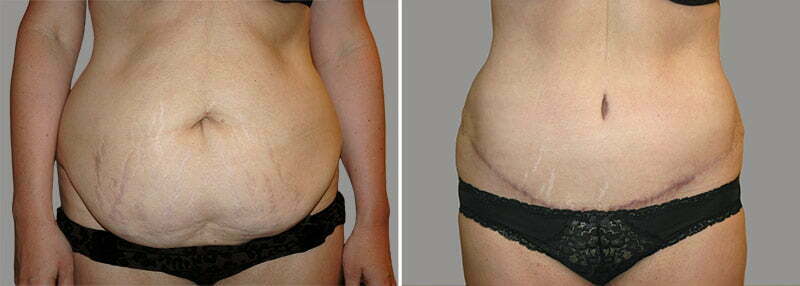
When it comes to the miracle of childbirth or significant weight fluctuations, your body undoubtedly undergoes tremendous changes. And while the joys of motherhood or achieving weight loss goals are incomparable, many are left with lasting effects on their abdominal region—namely, stretched abdominal muscles, or diastasis recti.
A tummy tuck is the most dependable solution for this condition, and today, we’re explaining how and why abdominal muscles are tightened during a tummy tuck.

Tummy tuck with muscle tightening
A tummy tuck involves several steps. First, Dr. Garazo usually performs liposuction to remove excess fat; this has the added benefit of supporting a smooth, finely contoured result.
Second, he places an incision along the base of the abdomen, from hip bone to hip bone. The skin is lifted to provide access to the underlying muscles and fascia (connective tissue that encompasses muscles). The muscles are brought back together along the midline with permanent sutures, effectively repairing diastasis recti.
This repair not only restores the muscles to their original alignment, but it also strengthens the abdominal wall, giving it a firm appearance, contouring a cinched waistline, and making it look and feel as though you have done all of your sit-ups!
Finally, excess skin is removed, remaining skin is re-draped, and the belly button is shaped in its natural place on your abdominal wall.
Muscle repair not only restores the muscles to their original alignment, but also strengthens the abdominal wall for a firm appearance and a cinched waistline.
Understanding stretched abdominal muscles & diastasis recti
Diastasis recti refers to the separation of the abdominal muscles—often a result of pregnancy or significant weight gain. Imagine your core muscles as a tightly knit fabric with a seam down the middle: when stretched for a period of time, it sometimes separates along the seam. This leaves a bulge or pooch in the belly area that cannot be repaired without the two sides being sewn together, just as with fabric that has been stretched past its limits.
While this isn’t painful, you can usually feel the muscle separation by pressing your fingertips into the centerline of your stomach. And diastasis recti can lead to symptoms beyond the visible bulge, including lower back pain or urinary incontinence due to the weakened muscles. A tummy tuck with muscle repair is considered the only effective solution for this condition; even with diligent exercise, the abdominal muscles can grow stronger, but the separation cannot repair itself.
The importance of working with an experienced, trusted plastic surgeon
A tummy tuck should produce a natural-looking result that works with your unique proportions. To achieve this, every detail matters: the ratio of the waist to the hips, the belly button, and the contour of your shape in profile view. Because these details vary from person to person, it’s imperative to work with an expert you trust.
Dr. Henry Garazo has helped restore Hagerstown-area patients’ confidence with tummy tuck surgery since opening his plastic surgery practice nearly 20 years ago. Along with our skilled and caring team, Dr. Garazo strives to help give each patient attentive care so that you feel well-informed and at home in our office! When you are ready to schedule a consultation, we invite you to call us at 301-791-1800.
Areas Served
- Hagerstown
- Frederick
- Martinsburg
